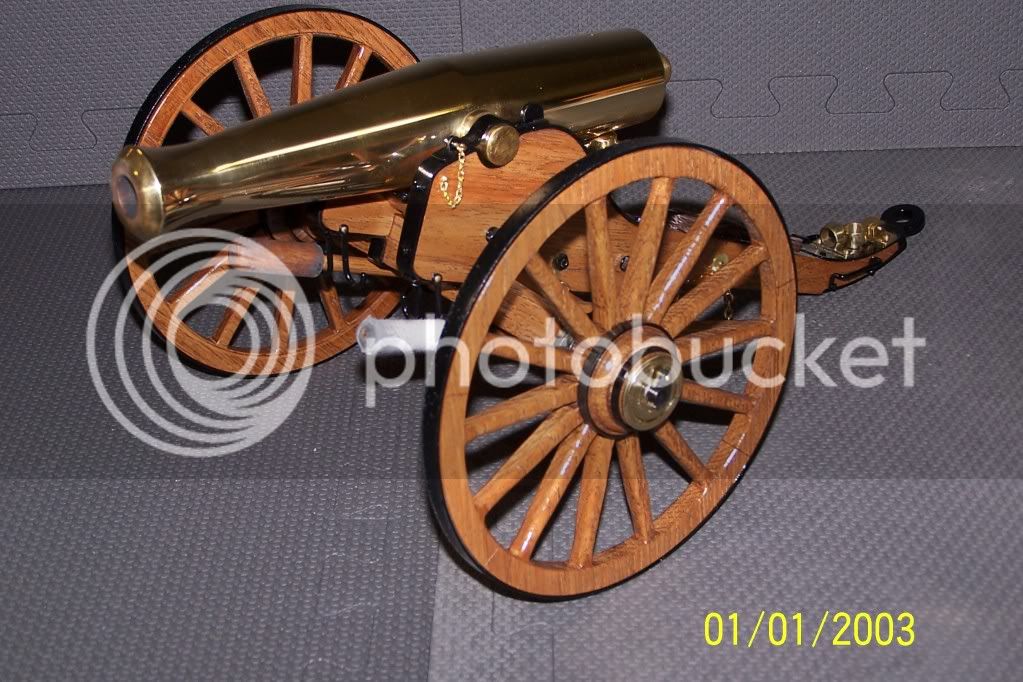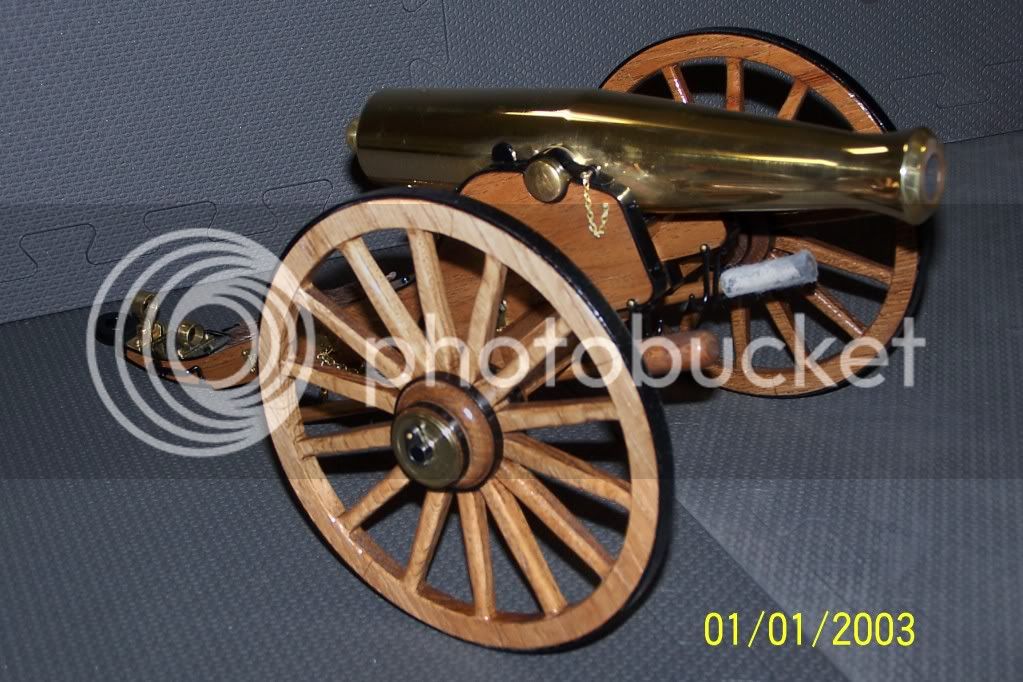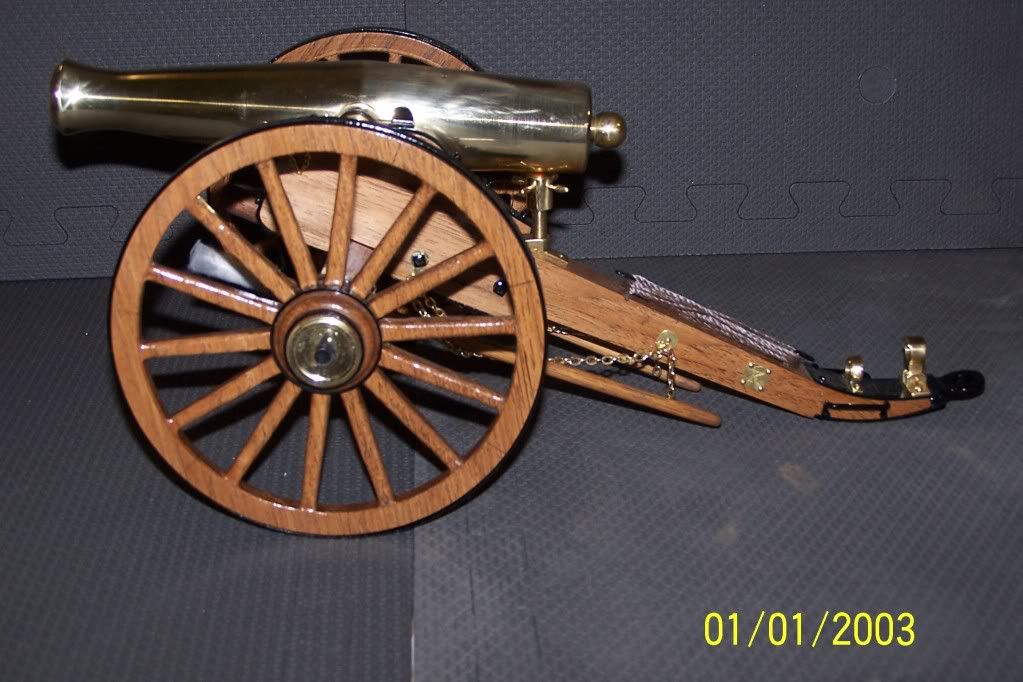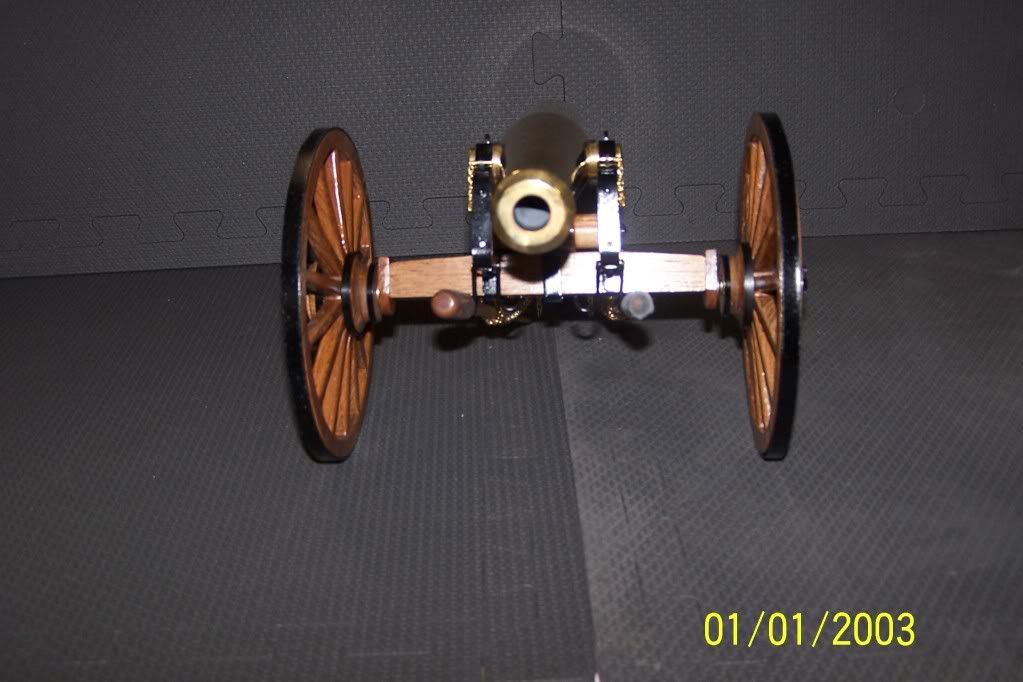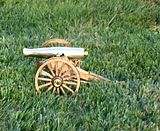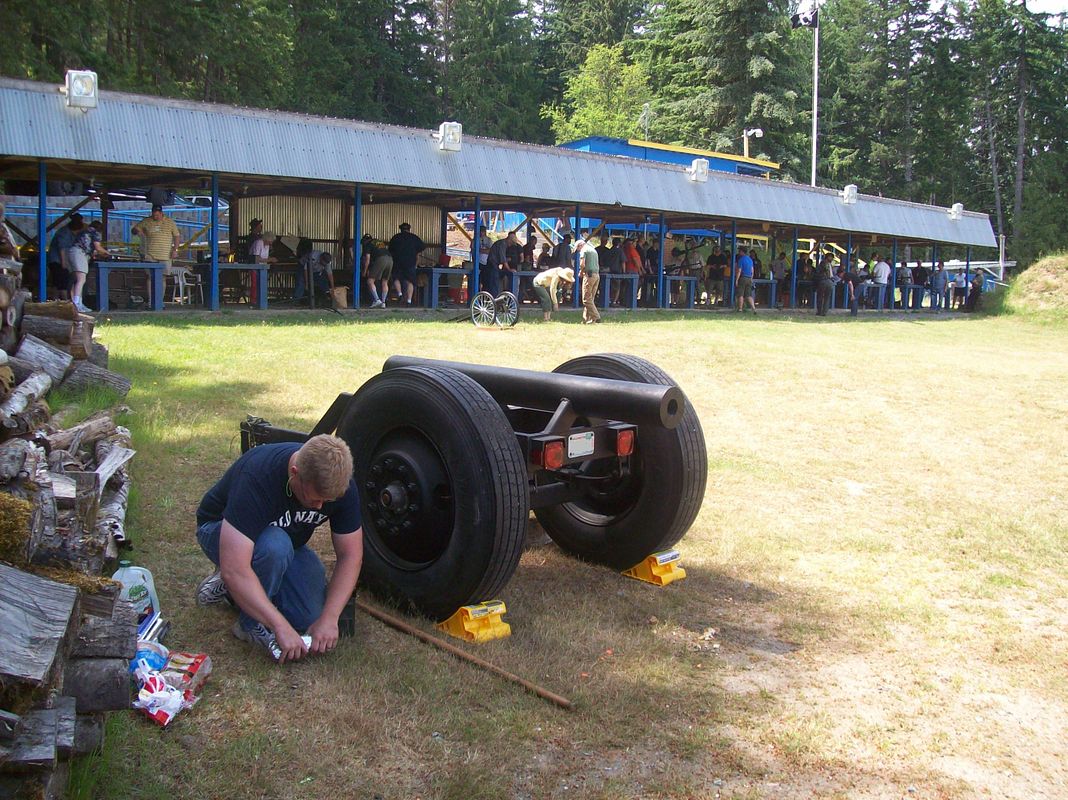This is a picture of my cannon.
I built it before I purchased my 10-foot lathe, which is why the barrel has no taper.
The barrel is three-inch 1028 mild steel seamless tubing. The wheels came off an 18-wheeler. I cut the king-pin mounts off the spindles, machined them flush, and built a drop axle. The breach plug was welded up with 7018 rod, 100% penetration (about 15 pounds of rod). Even though 1028 is not considered susceptible to hydrogen embrittlement, I still preheated both the breach-plug and barrel to 250 degrees, to drive out any free hydrogen. The rod was baked for several hours at 500 degrees, to ensure that it was completely dry.
Helpful Tip: never use nitrocellulose based powders within a cannon (i.e. smokeless riffle powder). And never ever use nitrocellulose based powders that have nitroglycerine accelerators in them (i.e. smokeless shotgun and/or pistol powder). The pressure rises with nitrocellulose based powders are difficult to control, and just a few grams difference in charge could mean the difference between a safe shot, and over pressurization of the barrel. When you burn a charge of shotgun and/or pistol power within a cannon, the nitroglycerine accelerator can transition from combustion to detonation, causing roughly 4 million PSI - which will easily liquefy steel. I.E. dont do it!
Pyrodex is relatively safe for blanks, but is not safe for firing projectiles. Again, the issue is controlling the pressure rise a little too much Pyrodex is capable of building yielding pressures.
The only safe powder is REAL black powder. The bigger the cannon, the bigger the required powder grain. Do not use FFFF powder in anything but the smallest of model cannons it will cause dangerous pressures. For my cannon, 1F is fine for blanks, however Cannon Grade (grains the size of oatmeal) is required for shooting projectiles which is illegal to do by the way - with my cannon size. . . . . In the picture, Im loading up a blank charge (two loaves of bread), with a charge of 1F black powder. The picture was taken on the fourth of July at our local gun range.
It weighs about 2000 pounds, and is road-towable.
